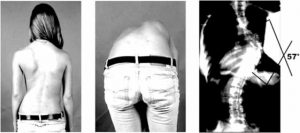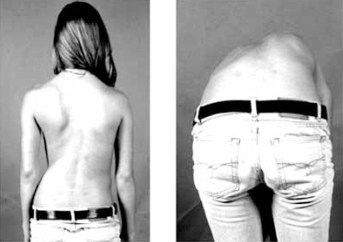There are a multitude of different corrective methods out there that seek to improve joint position, therefore affecting joint stability, and hopefully protect the individual from chronic pain/injury. PRI’s principles are based around the idea that the human body is inherently asymmetrical in structure and function. Because of the inherent asymmetrical organ makeup of the human body the left hemi-diaphragm is smaller, weaker and in a disadvantageous position. This asymmetry sets off a cascade of dysfunctions within the human body such as:
- Left hemi-pelvis that is anteriorly tipped and forwardly rotated.
- Spinal orientation to the right and corresponding overdeveloped right lower back musculature.
- Elevated left anterior ribs and corresponding weak left abdominals.
- Lowered and depressed shoulder and chest on the right and corresponding posterior rib hump.

Integrating PRI’s principles into life and the training experience relies heavily on respecting the human body’s dysfunctions in the different planes of movement and feeding quality postural positions in each. In the sagittal plane humans are by-and large hyperlordotic, which causes the hamstrings and abs to be in a lengthened and weakened position. The lower back and quads/hip flexors on the other hand are short and extremely strong in this position. This causes people to be pulled forward as they ambulate, putting them on their toes and making it extremely difficult to “feel” their heels in the ground.
Dysfunction in the sagittal plane can be seen all over our daily life. When we sit we anteriorly tilt our pelvis, hyperextend the lumbar spine, and shift our weight to the balls of our feet. There are many postural correction devices out there that exaggerate this hyperlordotic position. Typically they come in the form of a wedge or roll that is attached to your chair or in the case of car seats the seat has a “lumbar support” as a part of its structure. People are encouraged to sit back into their seat and allow the wedge to extend their back and elevate their chest, actually exacerbating the dysfunction.
In the weight room, the implications of this sagittal plane biomechanical anomaly can have drastic consequences. The deadlift, for instance, becomes dangerous if the client is unable to load their heels and create balance in the axial skeleton front-back. Their abs and hamstrings will be inhibited because of their postural position, placing undue stress on their lower back and potentially causing injury/pain. It is the posture they brought into the movement that hurts them.
PRI is a powerful means of correcting these dysfunctions, which are associated with the way we live our lives as humans. Regardless of what method of correction is used in your program; implementing these techniques to ensure you have a complete understanding of its principles, assessments, corrections, and integrations within life and the weight room will ensure the success of you and of your client.
The next this series will provide a tutorial of how to implement some of these tactics.

